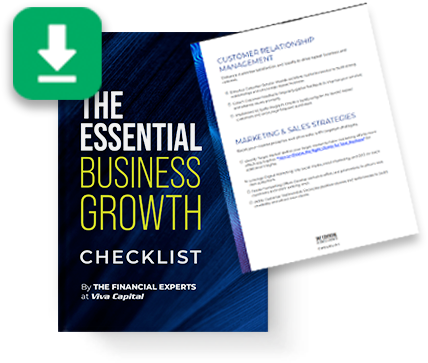
Few things influence business cash flow quite like client payments do. Yet, 55 percent of all B2B invoiced sales are overdue, Atradius reports. This creates significant strain and makes it difficult to operate profitably. It doesn’t have to be this way, though. You can use many tricks to get your invoices paid faster. On this page, we’ll show you what to include in a professional invoice and provide tips that can help start accelerating your cash flow right away.
What to Include in an Invoice
So, what should an invoice include? Let’s examine the parts of an invoice that can seriously affect how quickly you get paid.
1. Your Company Branding and Contact Information
Your branding is one of the first things your client will notice when opening the invoice. Ensure your logo is prominent and all colors and fonts match what people expect from your brand. This helps prove authenticity and builds a connection with the reader before they even look at any invoice information.
Be sure to extend your branding to external aspects of the invoice, such as envelopes and email subject lines. The goal is to start sending subconscious signals to your client the moment your message arrives.
Additionally, each invoice must include your contact information. If you have different people or departments managing orders and billing, include contact information for both. This makes it easy for customers to address any concerns about their invoice, signals that your message is authentic, and plants the seed that it’s time to place another order.
2. A Unique Invoice Number
How you generate invoice numbers is largely up to you. Some businesses include codes that signify customer groups, such as a leading “c” for commercial customers. Others begin with the year in which the invoice is generated. In any case, each invoice must have a unique invoice number that you and your customer can use to match up invoices and payments.
3. Purchase Order Number
If purchase orders are part of the ordering process, purchase order numbers should be included on invoices, too. This makes it easier for businesses to follow the paper trail and match a request with the final bill.
4. Client Information
Client information is one of the first things people think of when considering what is needed on an invoice. However, the person who places an order or works with your company is not always the person who manages the invoice. Always confirm the contact information for your client’s billing department before sending an invoice.
5. A Clear Description of the Services or Products Provided
Descriptions are often a weak point when businesses consider what to put on an invoice. Again, the person reading the invoice may not have any prior knowledge of your company. Clients, especially large businesses and government agencies, may not remember what they received from you either. Consider the description section as an opportunity to demonstrate the value you bring to their organization, and treat it like the person receiving the invoice has no idea who you are, even if it’s someone that you’ve invoiced dozens of times. Include as many details as possible.
A few things to consider including are:
- Full product or service names, not shorthand, can be misunderstood.
- Product or service codes.
- A comparison of hours used versus hours approved or budget spent versus allocated budget.
6. Important Dates
Of all the elements of an invoice, dates are among the most crucial to include.
- Date of service or delivery.
- Invoice date.
- Payment due date.
- Dates on which discounts or penalties are applied.
Ensure the due date stands out from other invoice elements. It may be beneficial to mention it more than once. For example, some businesses include it at the bottom of the invoice where the balance due is totaled and in bold print at the top as part of an invoice summary.
7. The Correct Amount Due
Although you’re unlikely to forget to include an amount due, businesses sometimes make errors in their amounts. This is more common when customers have different pricing tiers or can negotiate special rates.
Put safeguards in place to catch these issues. Depending on your invoicing process, you may want to:
- Have a second person proofread contracts added to your billing system.
- Proof invoices before they’re sent out.
- Spot-check a certain number of invoices each month.
- Perform annual audits for invoicing accuracy.
You’re also responsible for adding taxes to balances, if applicable. While most service-oriented businesses do not need to worry about this step, you will likely need to include state-specific taxes if the invoice includes products or inventory.
8. Clear Instructions for Paying the Invoice
Ensure the options for paying the invoice are clear, including payment methods you accept, steps involved in making a payment, and who to contact for help if needed. It’s also important to establish clear payment terms to reduce invoice disputes and misunderstandings, which can delay payments and negatively impact client relationships.
If your invoice payment method options include ACH or credit cards, it’s also a good idea to mention how you safeguard their data or include symbols demonstrating it’s safe to pay. This builds trust and can make your customers feel more comfortable making digital payments rather than paying by check, which speeds things up even more.
9. The Fine Print
Most businesses have some type of fine print to include in invoices to comply with laws or ensure customers know what’s expected. A few details you might want to include here are:
- Legal disclaimers.
- Explanations of unique fees or surcharges.
- Terms and conditions.
10. Keywords
President Theodore Roosevelt once said, “Speak softly and carry a big stick; you will go far.” He was referencing diplomatic policy, but the concept applies to your invoicing, too. Including specific words on your invoices speeds up payments, FreshBooks research shows. Whereas just 41 percent of invoices are paid within seven days on average, 44 percent are paid within seven days when they include the phrase “please,” while 45 percent are paid when the words “thank you” appear on the invoice. Businesses that mention “interest” also get paid faster.
11. Crafting a Professional Invoice Template for Your Business
Creating a professional invoice template ensures every invoice is clear and comprehensive. Include your company branding and contact information prominently to reinforce your brand and provide necessary contact details.
Your template should include fields for all critical information, such as the unique invoice number, issue date, and due date. To prevent misunderstandings, provide a detailed description of the products or services, including costs, and clear payment instructions and options, including online payments, to make it convenient for clients to pay promptly. A consistent, thorough template helps you create and send professional invoices that get paid faster.
Small Business Tips: How to Ensure Invoice Payments Are Made on Time
Ensuring timely invoice payments is vital for maintaining cash flow for small businesses. Now that we’ve covered what to include on an invoice, let’s quickly review a few other invoicing details that can help you get paid faster.
Digitize
How you manage invoices is almost as important as what you include on invoices. Go digital. It’ll help you manage invoices more efficiently and reduce errors.
How to Use Invoice Software to Streamline Your Billing Process
Utilizing invoice software is the key to getting paid faster and streamlining your billing process. The first step is to select an invoice generator that suits your business needs. A robust invoice software should allow you to effortlessly create and send professional invoices. By generating a professional invoice, you ensure that all the necessary details are included, reducing the chances of errors and disputes.
When you create and send invoices via an automated system, you save time and reduce administrative overhead. The software can handle recurring invoices, making it easier to manage long-term clients and ensure you get paid on time. Additionally, most invoice software integrates with accounting systems, providing a seamless way to track payments and outstanding invoices.
Another advantage of using invoice software is the ability to accept online payments. By including online payment options, you make it convenient for clients to pay immediately, thus enhancing your cash flow. A professional invoice template within the software ensures consistency and professionalism in every invoice you issue. This approach speeds up the payment process and builds trust with your clients, making them more likely to pay promptly.
Best Practices for Sending an Invoice via Email
Sending an invoice via email is one of the quickest ways to ensure it reaches your client promptly. Use a clear subject line that includes the invoice number and your company name. In the email body, provide a brief overview of the invoice, including the total amount due and payment terms.
Attach the invoice as a PDF to maintain its format. Use a professional invoice template with all necessary information, such as contact details and a detailed description of services provided. Highlight online payment options to facilitate immediate payment. Following up on unpaid invoices with polite reminders can significantly reduce outstanding invoices and ensure you get paid on time.
Share Billing Policies in Advance
Ensure that all your clients understand your billing policies before they receive an invoice. Have new clients sign your policies and include your policies on all estimates or bids.
Have Shorter Payment Windows
Not surprisingly, customers pay faster when they’re expected to. For instance, invoices that include “7 days” are paid within seven days, 58 percent of the time.
Bill Promptly
Don’t wait weeks or more after goods or services are delivered to invoice. Send it immediately.
Send via Their Preferred Method
Digitizing opens doors and allows you to communicate with customers in many different ways. Find out how each customer prefers to receive invoices and follow their preferences to speed payments dramatically. For instance, 70 percent of text invoices are paid the day they’re sent, Small Business Trends reports.
Follow Industry- and Region-Specific Regulations
The United States has relatively lax invoicing requirements, with the exception of a few industries. However, many other countries have a full list of legal requirements for invoicing. Make sure you’re complying with all regulatory requirements.
Follow Up
Start sending reminders the day after a payment is missed. Initial reminders can be addressed from a customer service standpoint as a friendly reminder that they missed a payment. However, you should also be prepared to be more firm as the days progress.
Get Paid Faster with Invoice Factoring from Viva Capital
Securing swift payment for your invoices is essential to maintaining the cash flow that keeps your business thriving. To improve your chances of getting paid faster, writing an invoice that’s clear, professional, and detailed is important. Employing a well-designed invoice template that includes your payment terms, multiple payment methods, and specific instructions can make a significant difference. Ensure your invoice clearly states “payment is due within 30 days,” or consider offering incentives for “payment in advance.” Partnering with an invoice factoring company can also help expedite payments, giving you immediate access to cash that would otherwise be tied up in unpaid invoices. Leveraging modern invoice software allows you to send invoices directly to your client’s preferred inbox, whether through a traditional email or an online payment system, streamlining the payment process. Including options for online payment and emphasizing the security of these methods can address client concerns and encourage prompt payments. Remember, the clarity of your invoice, from how you write your invoice email to the choice of your invoice template, plays a pivotal role in how quickly you get paid. By adopting these best practices, you position your business to manage its invoices more effectively, encouraging clients to settle their dues promptly and ensuring your cash flow remains uninterrupted.
For transportation and logistics companies, partnering with a specialized freight factoring service can be particularly effective, offering fast access to working capital and helping carriers stay on the road while waiting on client payments.
When to Consider Asset Based Lending for Growing Businesses
Invoice factoring is an excellent solution for many businesses to improve cash flow and get paid faster. However, as your business expands, you might find that you need a larger influx of capital to continue your growth. In such cases, asset based lending for small businesses offers a flexible solution by leveraging your company’s assets, such as inventory or equipment, to secure funding. This method allows you to access more substantial financing while still benefiting from the fast payment structure of factoring. By combining both strategies, your business can maintain steady cash flow and secure the funds needed to reach the next level of success.
Rather than waiting weeks or months for customers to pay, Viva can provide immediate payment and will wait for your client’s payments. Request a free invoice factoring quote to learn more or get started.
- How Subcontractor Early Payment Programs Build Relationships - May 29, 2025
- Invoice Factoring Costs: Are They Worth It? - May 2, 2025
- 7 Proactive Tactics for Avoiding Invoice Disputes - March 3, 2025



